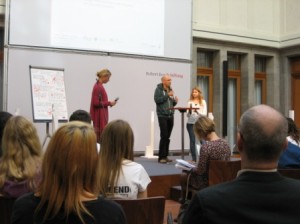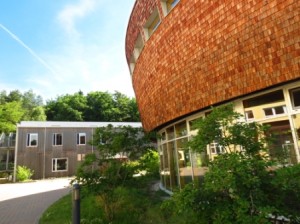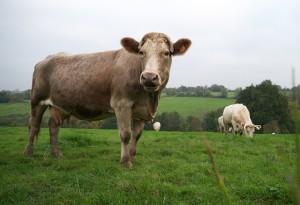Young climate enthusiasts sharpen skills at ‘2° Campus’
For the past two years, the German chapter of the World Fund for Nature (WWF) has organized a project called “2° Campus” or “Two degrees Celsius Campus.” It’s targeted at young students in Germany between the ages of 15 and 19.
The aim is to bring together young people interested in climate issues and science and encourage them to work on related subjects ranging from energy, mobility, building insulation to food. As part of the project, the students visited German universities, spoke with scientists and even got the chance to work on research projects with them.
As the project drew to a close this week in Berlin, Global Ideas reporter Julia Henrichmann caught up with some of the young climate enthusiasts and found out what drives them to engage with climate and environmental issues.
Enno Gerhard, 16, from Bremen
Global Ideas: What made you take part in the project?
I happened to read about it in a newsletter. I believe that if we don’t change the world, our future generations will not survive.
 What was your focus during the project?
What was your focus during the project?
I always wanted to find out more about solar modules. We tried to figure out how to build organic solar cells. In the project, I was responsible for researching the variation of different temperatures in solar cells.
Has the 2° Campus project changed you as a person?
After taking part in the 2° Campus, I stopped eating meat, we even changed our electricity supplier at home. Now I would love to study physics to help build smart grids in Germany and to find new solutions for the power network (especially for alternative forms of energy).
What do you think are the most pressing climate issues?
We absolutely have to find quick answers for mobility, for example with electric cars. We also have to ensure that issues such as mobility and energy are brought together such as setting up new smart grids or building energy efficient buildings.
Lukas Jochum, 17, from Ottweiler in Saarland
Global Ideas: What got you interested in the project?
My teacher read about the project and asked me if I wanted to be part of it. I always wanted to save the earth and I’m already active in the Green Party.
What did you work on in the project?
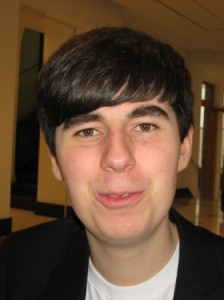 We worked on refitting old school buildings. For example, we looked at new ways of insulating buildings by installing new windows.
We worked on refitting old school buildings. For example, we looked at new ways of insulating buildings by installing new windows.
What do you do personally to reduce your carbon footprint?
I always use my bicycle, I am vegetarian and I’m trying to convince my parents not to use the car that often.
How do you see the state of the planet in 30 years?
My dream is that we ban nuclear energy worldwide.
Antonia Bürke, 17, from Leipzig
Global Ideas: What’s your motivation for participating in the project?
Climate change concerns us all.
What did you work on in the project?
In the project, I was responsible for inventing new coloring for solar cells. We used natural colors from tea, for example. It worked pretty well!
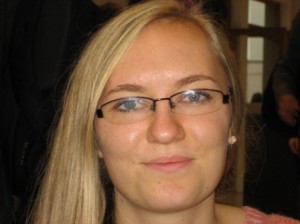 What do you do to combat climate change?
What do you do to combat climate change?
I don’t eat meat, I always use my bicycle or use public transport. And I try and convince my friends to do that as well.
Where do you see the world in 30 years?
My dream is that many more people use trains and buses instead of cars. But for that, public transport options need to be more attractive. I hope that the famous German “Energiewende” (the transition from nuclear and fossil fuels to renewable sources of energy) will be in force and implemented by other countries as well.
Helen Jerg, 16, from Mannheim
Global Ideas: What prompted you to apply for the project?
We are going to be here for a long time and if we don’t change our planet, then our future is uncertain.
What was your role in the project?
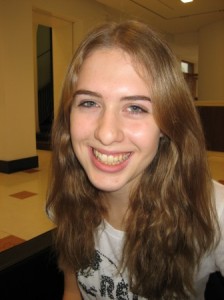 I want to study construction engineering to learn how to upgrade old buildings. My idea in the WWF project was not only to refit buildings and to put in new windows and to insulate walls but also to find a different use for school buildings. For example, why don’t we use existing school buildings and convert them into youth hostels over the holidays? That way no extra energy is wasted and the school buildings, that lie idle over the holiday period, are put to good use.
I want to study construction engineering to learn how to upgrade old buildings. My idea in the WWF project was not only to refit buildings and to put in new windows and to insulate walls but also to find a different use for school buildings. For example, why don’t we use existing school buildings and convert them into youth hostels over the holidays? That way no extra energy is wasted and the school buildings, that lie idle over the holiday period, are put to good use.
What’s your personal contribution to lowering emissions?
I am vegetarian and I try to convince my friends and family not to eat that much meat anymore. I also try to use organic products as much as I can.
What do you think the world will look like in 2043?
I hope that everybody will use green energy then, that many people turn vegetarian and that a critical mass of people become aware of the dangers of climate change.
Note: The name “2 degrees Celsius Campus” refers to a WWF study that shows greenhouse gas emissions in Germany can be cut by 95 percent by 2050 in order to limit global warming to a maximum of 2 degrees Celsius compared to pre-industrial levels. The study contains concrete suggestions for what needs to change in the fields of energy, mobility, housing and food in order to slash emissions.



